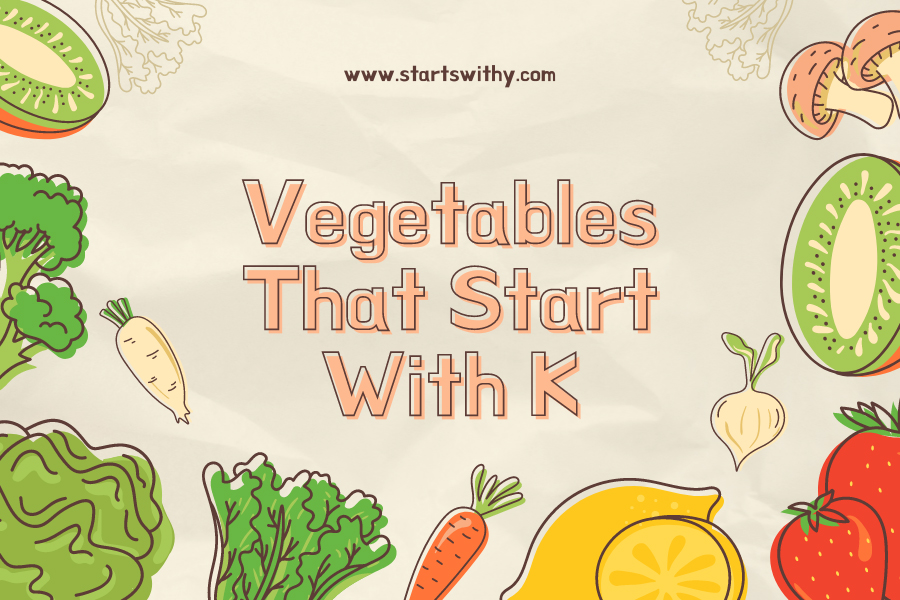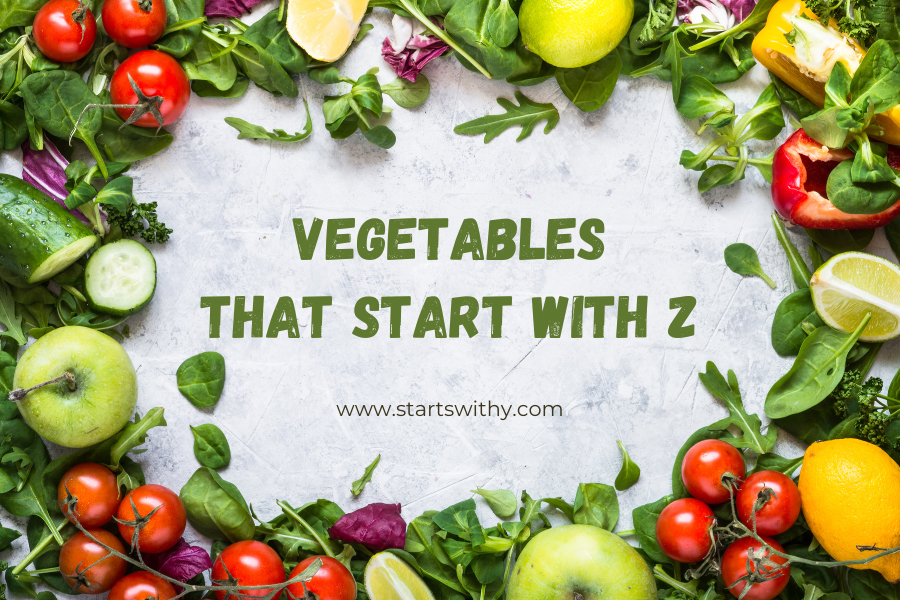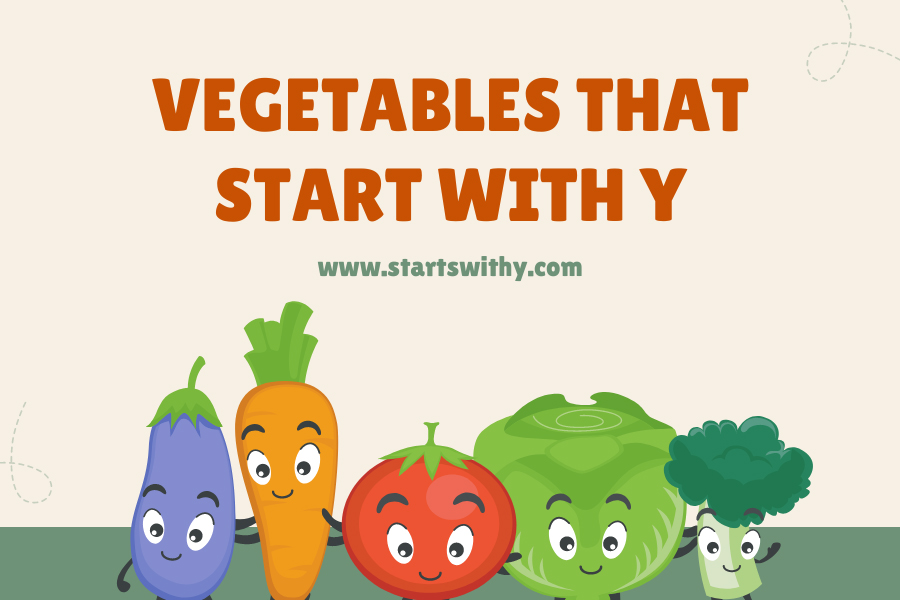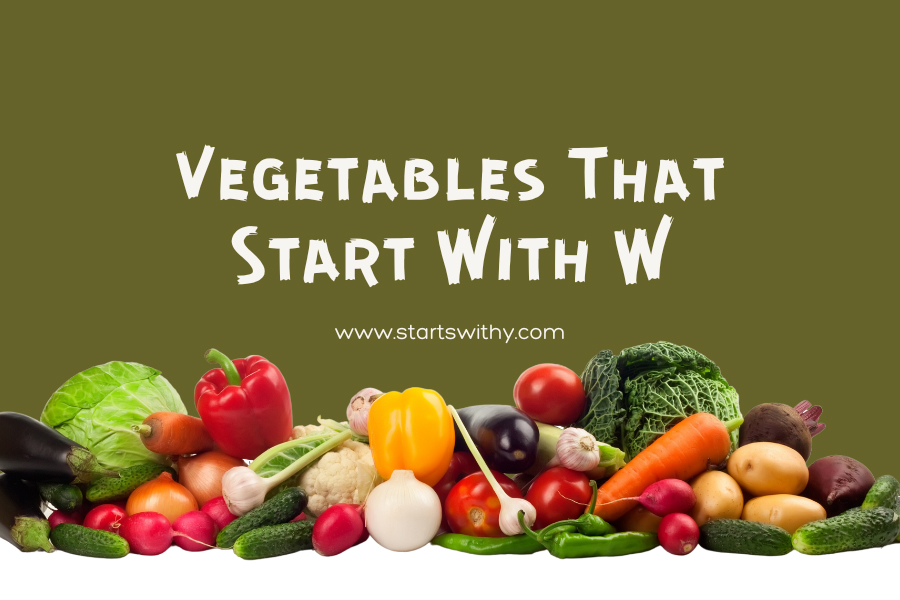The world of vegetables is a kaleidoscope of flavors, textures, and nutritional offerings, with each alphabetical segment unveiling its own delightful array. As we touch upon the letter ‘K’, we discover a blend of both familiar and exotic vegetables, each boasting unique attributes and culinary tales.
This article is your gateway to the captivating realm of ‘K’-oriented vegetables. From the cruciferous king, kale, known for its nutrient-packed leaves, to the intriguing kohlrabi, a globular gem of the vegetable world, we’ll embark on a flavorful exploration that showcases their culinary versatility and health benefits. Whether you’re a seasoned chef, a home gardener, or simply a vegetable enthusiast looking to expand your horizons, let’s navigate together through the intriguing kitchen garden that is dedicated to the wonders starting with the letter “K”.
Vegetables That Start With The Letter K
The extensive garden of vegetables offers us a cornucopia of flavors, textures, and nutrients. As we step into the world of ‘K’, we unearth a unique group of vegetables, some of which are household staples, while others remain lesser-known treasures waiting to be discovered. This article dives deep into vegetables that begin with the letter ‘K’, illuminating their culinary versatility, origins, and health benefits.
1. Kale
In recent years, kale has emerged as the superstar of the vegetable world, especially among health enthusiasts. This leafy green, belonging to the cabbage family, comes in various types like curly, lacinato, and Russian. It can be sautéed, baked (as chips), blended in smoothies, or used raw in salads. Nutritionally speaking, kale is a powerhouse, providing an abundant supply of vitamins A, C, and K, as well as minerals like calcium and iron.
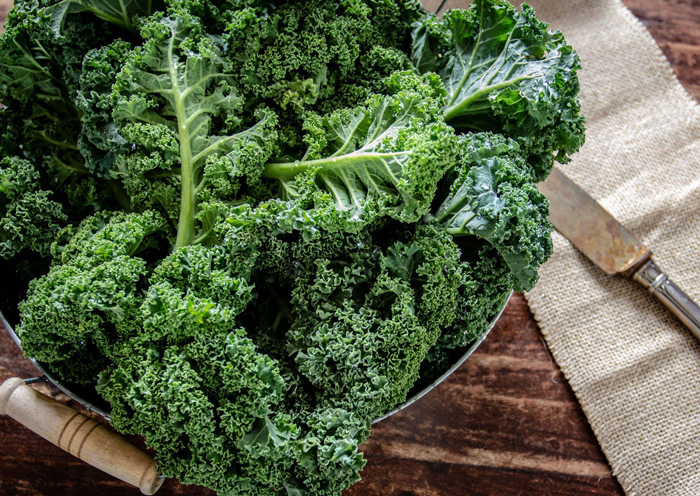
2. Kohlrabi
A lesser-known gem, kohlrabi is a bulbous vegetable that’s a member of the brassica family. It might look a bit alien, with its bulb and protruding stems, but its taste is a delightful cross between broccoli and cabbage. Both the bulb and its leaves are edible. It can be roasted, pureed in soups, or even enjoyed raw. Kohlrabi is rich in vitamin C, fiber, and potassium.
3. Komatsuna
Often dubbed Japanese mustard spinach, komatsuna is not a true spinach but rather belongs to the brassica family. Its tender leaves and stems have a mild, slightly mustard-like taste. Widely used in Japanese and Korean cuisines, komatsuna can be stir-fried, pickled, or added to soups. It’s an excellent source of vitamins A and C, as well as calcium.
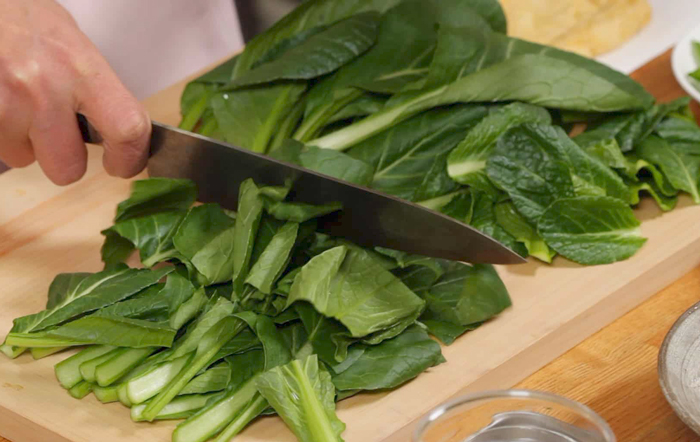
4. Kidney Beans
While beans are primarily legumes, in culinary contexts, they’re often treated as vegetables. Kidney beans, with their distinct red hue and kidney shape, are no exception. A staple in many cuisines worldwide, they’re crucial for dishes like rajma and chili con carne. Kidney beans are protein-rich, provide essential fiber, and are a good source of iron and folate.
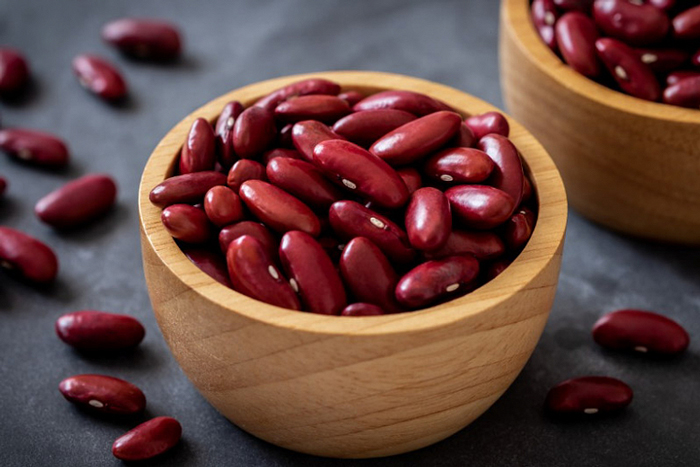
5. Kurrat
A variant of leeks popular in the Middle East, kurrat is utilized primarily for its flavorful leaves in soups, stews, and salads. It’s also occasionally used as a green vegetable. Rich in dietary fiber, vitamins, and minerals, it’s a healthful addition to various dishes.
6. Karella
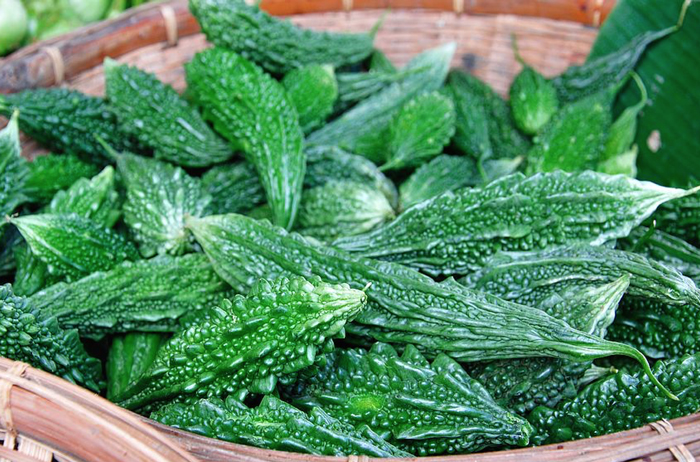
Also known as bitter gourd or bitter melon, karella is a staple in Asian cuisines. Its distinctive warty appearance encases a bitter flesh that becomes more palatable when cooked. Often used in stir-fries, stews, or even as a juice, karella is believed to have medicinal properties, especially for regulating blood sugar levels.
7. King Oyster Mushroom
Though technically fungi, culinary traditions often class mushrooms alongside vegetables. The king oyster mushroom, with its thick stem and minimal cap, is praised for its meaty texture. It can be grilled, roasted, or sautéed. Beyond its taste, it provides a variety of nutrients, including B-vitamins, selenium, and antioxidants.
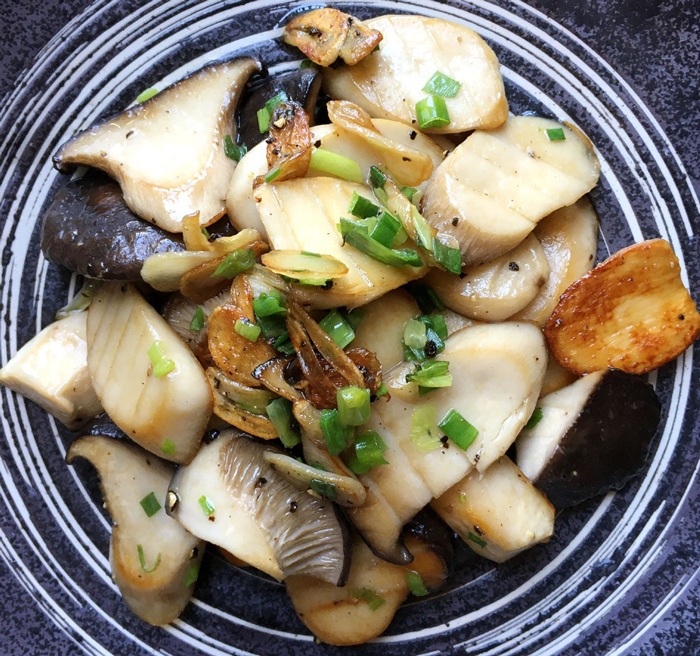
8. Kelp
A form of seaweed, kelp is often included in the vegetable category due to its culinary uses. Popular in East Asian cuisines, it can be used in soups, salads, or consumed as dried snacks. Kelp is a natural source of iodine, which is vital for thyroid function, and is also rich in vitamins and minerals.
9. Kabocha
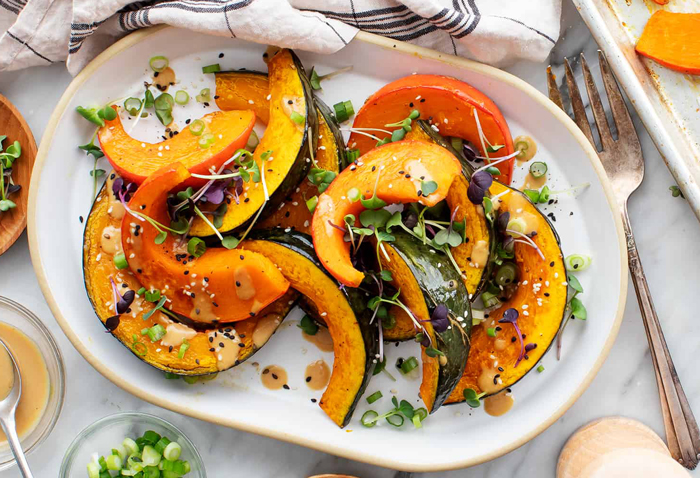
Kabocha, also known as Japanese pumpkin, is a vibrant orange winter squash with a sweet, nutty flavor and a smooth, creamy texture. It’s a versatile ingredient that can be enjoyed roasted, steamed, boiled, mashed, or even raw. This delicious squash is not only a culinary delight but also packs a powerful nutritional punch.
- Nutritional Powerhouse: Kabocha is an excellent source of vitamins A and C, essential for healthy vision and immunity. It’s also rich in fiber, potassium, and manganese, contributing to digestive health, blood pressure control, and enzyme function.
- Health Benefits: Studies suggest that kabocha may offer various health benefits, including reducing the risk of certain cancers, improving diabetes management, and supporting bone health due to its vitamin and mineral content.
- Fun Facts for Kids:
- Kabocha comes in various shapes and sizes, from small and round to large and oblong.
- The thicker the rind, the sweeter the flesh.
- In Japan, kabocha is a popular ingredient in traditional dishes like tempura and stews.
Teaching Tips:
- Get kids involved in preparing kabocha by letting them help cut and scoop the flesh.
- Make kabocha fun by trying different recipes like kabocha fries, pancakes, or muffins.
- Talk about the health benefits of kabocha and encourage kids to choose colorful vegetables.
10. Kalettes
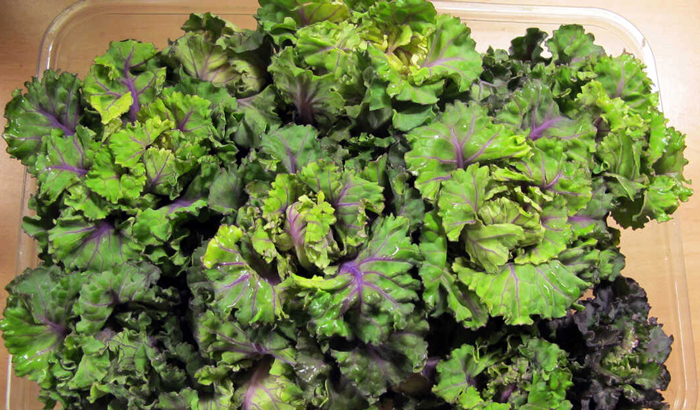
Kalettes, also known as Brussel sprouts on a stalk, are miniature Brussel sprouts that have gained popularity in recent years. These bite-sized delights offer a sweeter, milder flavor than traditional Brussel sprouts and boast a tender, crunchy texture. Kalettes are a fun and nutritious addition to any meal, making them a perfect choice for families with picky eaters.
- Flavor and Versatility: Kalettes have a slightly nutty, sweet flavor with hints of cabbage and broccoli. They can be enjoyed roasted, steamed, grilled, or sautéed, making them a versatile ingredient for various dishes.
- Nutritional Value: Similar to Brussel sprouts, kalettes are a good source of vitamins C, K, and fiber. They also contain essential minerals like potassium and manganese.
- Fun Facts for Kids:
- Kalettes are a hybrid of Brussel sprouts and kale, hence the name “kalettes.”
- They were first developed in the 1990s by a Belgian plant breeder.
- Kalettes are a good source of plant-based protein, making them a suitable option for vegetarian and vegan diets.
Teaching Tips:
- Encourage kids to try kalettes raw or roasted with a drizzle of olive oil and a sprinkle of salt.
- Get creative and add kalettes to salads, stir-fries, or even pizzas.
- Discuss the benefits of eating different colored vegetables and how kalettes contribute to a healthy diet.
11. Kangkong
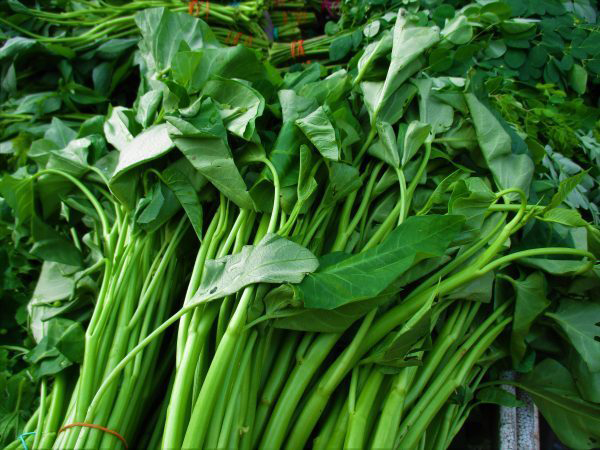
Kangkong, also known as water spinach or swamp cabbage, is a popular leafy green vegetable in Southeast Asia and other tropical regions. This fast-growing aquatic plant thrives in waterlogged areas and offers a delightful crunch and slightly bitter flavor. Kangkong is a versatile ingredient that can be stir-fried, sautéed, steamed, or added to soups and stews.
- Nutritional Content: Kangkong is an excellent source of vitamins A, C, and K, essential for maintaining healthy vision, immunity, and bone health. It’s also rich in iron, folate, and manganese, contributing to red blood cell production, pregnancy health, and enzyme function.
- Culinary Uses: Kangkong is a staple ingredient in many Asian dishes, including Filipino adobo, Thai green curry, and Chinese stir-fries. Its stems can be enjoyed raw or cooked, adding a delightful texture to salads and other preparations.
- Fun Facts for Kids:
- Kangkong is a fast-growing plant that can be harvested multiple times in a single season.
- It’s a good source of plant-based protein and can be a suitable option for vegetarian and vegan diets.
- In some cultures, kangkong is believed to have medicinal properties and is used in traditional remedies.
Teaching Tips:
- Involve kids in preparing kangkong by letting them help wash and chop the leaves and stems.
- Encourage them to try kangkong in different dishes and compare it to other leafy greens.
- Discuss the importance of eating a variety of vegetables and how kangkong contributes to a balanced diet.
12. Kapas
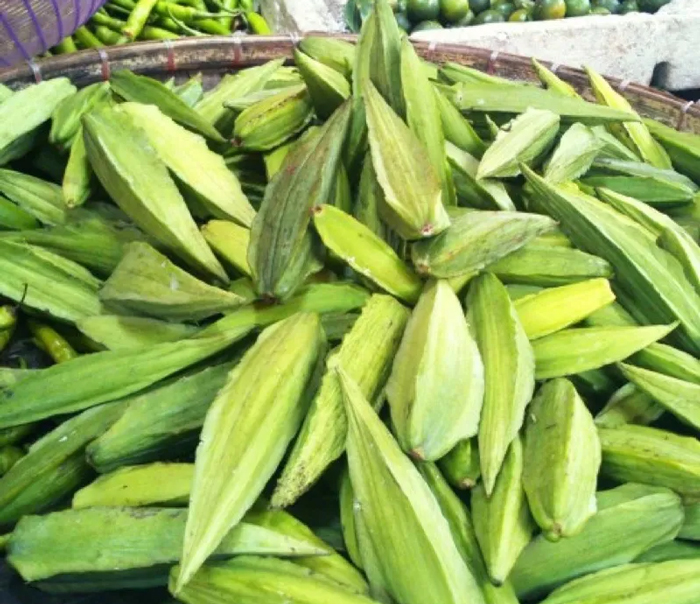
Kapas, also known as Malabar spinach or Ceylon spinach, is a vibrant green leafy vegetable native to Southeast Asia. It’s loved for its delicate, cloud-like leaves and mild, slightly sweet flavor. Kapas is a versatile ingredient that can be enjoyed raw, stir-fried, steamed, or even boiled, making it a perfect addition to various dishes.
- Nutritional Powerhouse: Kapas is an excellent source of vitamins A and C, essential for healthy vision and immunity. It’s also rich in iron, calcium, and magnesium, contributing to red blood cell production, bone health, and muscle function.
- Culinary Delights: Kapas can be enjoyed raw in salads for a delightful crunch and fresh flavor. Stir-frying or steaming retains its vibrant green color and slightly sweet taste, making it a perfect match for rice, noodles, or curries. Boiled kapas can be mashed or pureed for a delicious and nutritious baby food.
- Fun Facts for Kids:
- Kapas thrives in hot and humid climates and can be harvested year-round.
- The leaves and stems are both edible, offering a variety of textures and flavors.
- In some cultures, kapas is believed to have medicinal properties and is used to treat various ailments.
Teaching Tips:
- Get kids involved in preparing kapas by letting them help wash and chop the leaves.
- Encourage them to try kapas raw and cooked to compare the flavors and textures.
- Talk about the different ways we can grow our own food and how kapas thrives in tropical climates.
13. Kencur
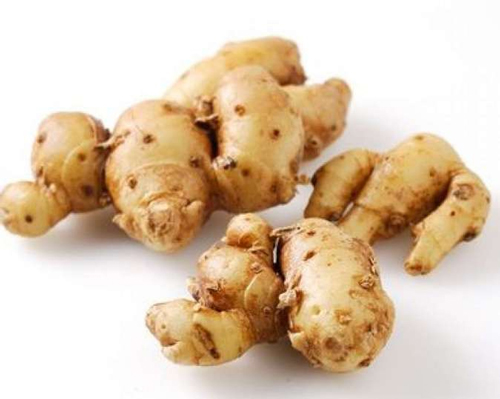
Kencur, also known as lesser galangal or Chinese ginger, is a knobby, aromatic root with a unique flavor profile. It boasts a citrusy, ginger-like scent with hints of pine and camphor. Kencur is a versatile ingredient used in Southeast Asian and Chinese cuisine, adding depth and complexity to savory dishes and even desserts.
- Culinary Versatility: Kencur is traditionally used in soups, curries, and stir-fries, where its fragrant oils and pungent flavor enhance the overall taste. It’s also finely grated and added to marinades, sauces, and dressings for a unique twist. Kencur can even be candied for a sweet and spicy treat.
- Medicinal Properties: Beyond its culinary uses, kencur has been used in traditional medicine for centuries. It’s believed to have anti-inflammatory, analgesic, and digestive properties, making it a natural remedy for various ailments.
- Fun Facts for Kids:
- Kencur is related to turmeric and ginger, belonging to the Zingiberaceae family.
- Its essential oils are valued in perfumery for their unique citrusy and woody aroma.
- Kencur is a relatively rare ingredient, adding an element of adventure to culinary exploration.
Teaching Tips:
- Let kids smell and taste kencur to experience its unique aroma and flavor.
- Discuss the cultural significance of food and how different ingredients are used in various cuisines.
- Talk about the medicinal properties of plants and how traditional medicine utilizes natural remedies.
14. Kennebec Potato
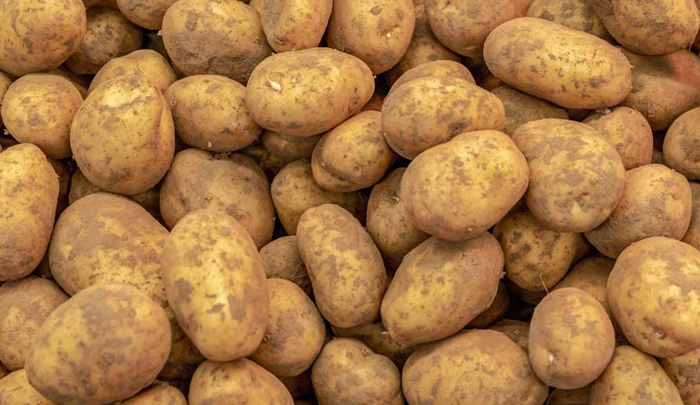
The Kennebec potato, a beloved American variety, is renowned for its smooth, creamy texture and delicate yet distinct flavor. This versatile spud excels in baking, mashing, roasting, and even frying, making it a staple in kitchens across the United States.
- A Culinary Chameleon: Kennebec potatoes have a subtle sweetness and a slightly nutty undertone, making them perfect for various preparations. Their high moisture content creates fluffy mashes and creamy gratins, while their firm flesh holds its shape well for roasting and frying.
- Historical Significance: Developed in Maine in the 1850s, the Kennebec potato was once the “Cadillac of potatoes,” favored by presidents and chefs alike. Today, it remains a popular choice for its consistent quality and versatility.
- Fun Facts for Kids:
- Kennebec potatoes are best harvested in the fall and have a relatively short shelf life.
- They require medium-light soil and cool temperatures for optimal growth.
- Growing your own potatoes can be a fun and rewarding experience for children.
Teaching Tips:
- Get kids involved in preparing Kennebec potatoes by letting them help peel, mash, or cut them into different shapes.
- Discuss the different ways we can cook potatoes and how each method affects their texture and flavor.
- Encourage children to try potatoes in various dishes and explore their culinary versatility.
15. Kumara
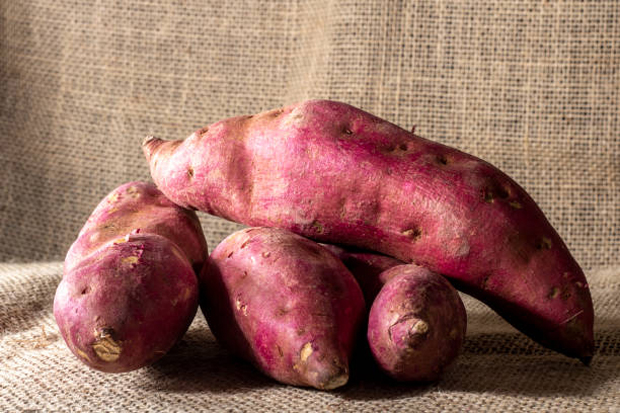
Kumara, also known as sweet potato, is a vibrant orange root vegetable beloved for its rich, caramelized flavor and creamy texture. Packed with nutrients and versatility, kumara is a delicious way to boost your family’s health and culinary adventures.
- Nutritional Bounty: Kumara is an excellent source of vitamin A, essential for healthy vision and immunity. It’s also rich in vitamin C, potassium, and fiber, contributing to immune function, blood pressure control, and digestive health. Additionally, its orange color indicates the presence of beta-carotene, an antioxidant that converts to vitamin A in the body.
- Culinary Canvas: Kumara shines in various dishes, from savory to sweet. Roast it for a caramelized delight, mash it for a smooth and creamy side dish, or bake it into pies and desserts for a touch of natural sweetness. Its natural sweetness pairs well with savory ingredients like rosemary, ginger, and chili flakes, making it a versatile ingredient for creative exploration.
- Fun Facts for Kids:
- Kumara comes in various colors, including orange, purple, and even white!
- It was a staple food for indigenous peoples in the Americas for centuries.
- Growing your own kumara can be a fun and educational experience for children.
Teaching Tips:
- Get kids involved in preparing kumara by letting them help wash, peel, and cut it into different shapes.
- Encourage them to try kumara in different dishes and compare the flavors and textures.
- Talk about the importance of eating a variety of colorful vegetables and how kumara contributes to a balanced diet.
16. Kiwano
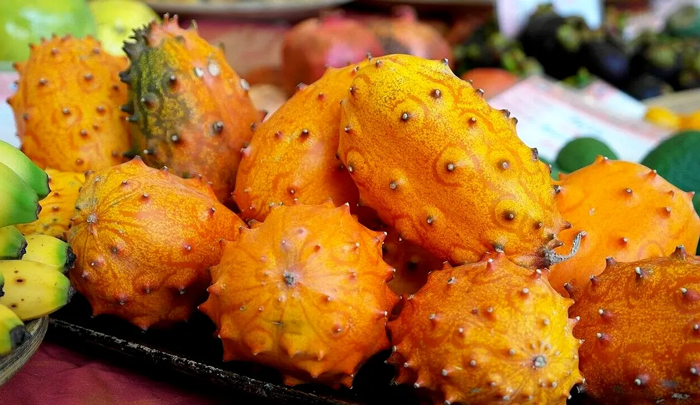
Kiwano, also known as horned melon or African horned cucumber, is a unique fruit with a vibrant orange skin covered in spiky protuberances. Its vibrant green flesh surprises with a refreshing, subtly sweet flavor reminiscent of a mix between cucumber, kiwi, and banana. Kiwano adds a fun and exotic touch to any dish.
- Eye-Catching Appeal: Kiwano’s unusual appearance makes it a conversation starter at any dinner table. Its bright orange skin and spiky horns intrigue children and adults alike, adding a playful element to mealtimes.
- Flavorful Versatility: Beyond its visual appeal, kiwano offers a refreshing and slightly sweet flavor with hints of cucumber and citrus. It can be enjoyed raw in salads, adding a unique texture and taste. Its juicy flesh can also be scooped out and enjoyed on its own or blended into smoothies for a tropical twist.
- Fun Facts for Kids:
- Kiwano grows wild in the African savanna and is also cultivated in New Zealand and other countries.
- The spikes on its skin are harmless and help protect the fruit from animals.
- Kiwano is a good source of vitamin C and antioxidants.
Teaching Tips:
- Let kids explore the spiky exterior of kiwano and talk about its unique appearance.
- Encourage them to try kiwano raw or blended into smoothies to experience its refreshing flavor.
- Discuss the different fruits and vegetables from around the world and how kiwano adds a touch of the exotic.
17. Kovakkai
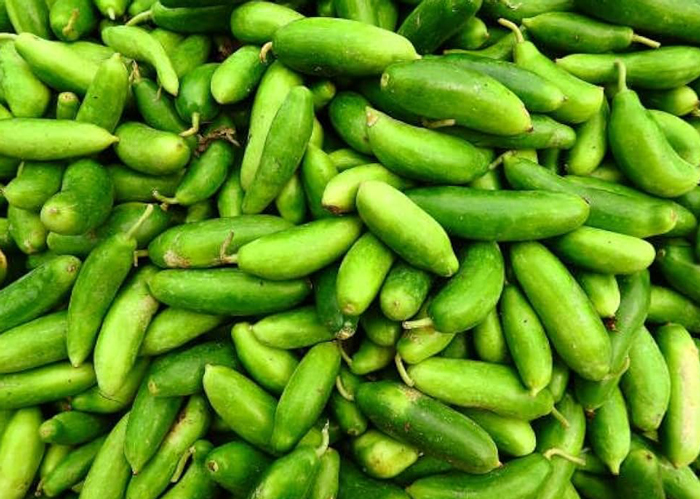
Kovakkai, also known as baby brinjal or Thai eggplant, are miniature eggplants with a delicate flavor and delightful crunch. These bite-sized delights are popular in South Indian cuisine and offer a versatile ingredient for various dishes.
- Culinary Versatility: Kovakkai can be enjoyed in a variety of ways. They can be stir-fried, steamed, or sautéed, adding a slightly bitter and nutty flavor to curries, stir-fries, and salads. Their small size makes them perfect for pickling or stuffing with savory fillings.
- Nutritional Value: Kovakkai are a good source of dietary fiber, essential for digestive health. They also contain vitamins B6 and C, contributing to energy production and immune function.
- Fun Facts for Kids:
- Kovakkai grow to be only about 1-2 inches long, making them fun to pick and eat.
- They are a good source of plant-based protein and can be a suitable option for vegetarian and vegan diets.
- In some cultures, kovakkai are believed to have medicinal properties and are used in traditional remedies.
Teaching Tips:
- Get kids involved in preparing kovakkai by letting them help wash and chop them.
- Encourage them to try kovakkai in different dishes and compare them to regular eggplants.
- Discuss the importance of eating a variety of vegetables and how kovakkai offer a unique culinary experience.
List of Vegetables Starting with K
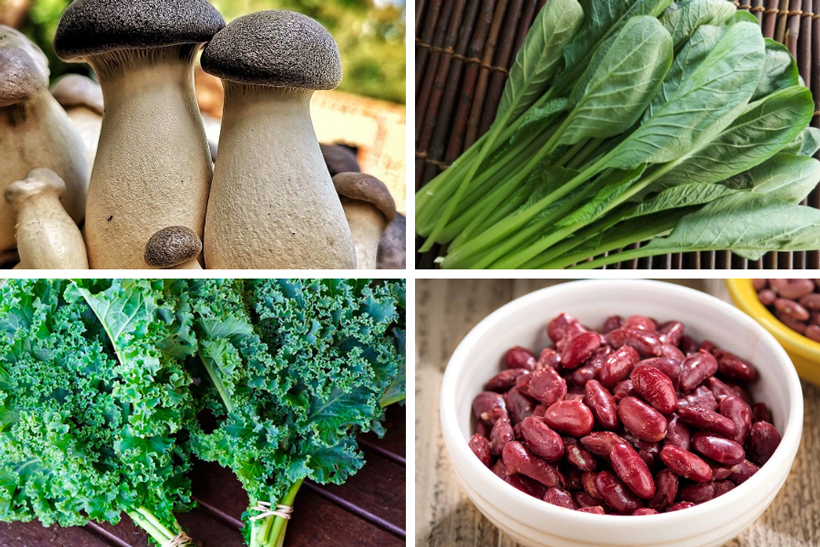
| Kabocha | Kabocha Squash | Kale |
| Kale And Cavolo Nero | Kalette | Kangkong |
| Kapas | Kelp | Kencur |
| Kennebec Potato | Kerguelen Cabbage | Kidney Bean |
| King Edward Potato | Kiwano | Kohlrabi |
| Komatsuna | Kombu | Kovakkai |
| Kraut Juice | Kuka | Kumara |
| Kurrat |
Conclusion
The ‘K’ in the vegetable world introduces us to a range of vibrant and nutritionally dense foods. From the ever-popular kale to the oceanic offerings of kelp, this group offers a bounty of tastes and textures for the discerning palate. What’s remarkable about these vegetables is their adaptability; they can easily find a place in various cuisines, making them both versatile and indispensable.
Including these ‘K’ vegetables in our diets ensures we’re not just treating our taste buds but also nourishing our bodies. Each vegetable, with its unique nutrient profile, offers a myriad of health benefits. As we keep exploring the world of vegetables, let the kaleidoscope of ‘K’ be a testament to nature’s diversity and generosity. Whether you’re savoring the hearty taste of kidney beans or the umami goodness of king oyster mushrooms, there’s no denying that the ‘K’ vegetables are culinary kings in their own right.
Vegetables That Start With
A | B | C | D | E | F | G | H | I | J | K | L | M | N | O | P | R | S | T | U | V | W | Y | Z
